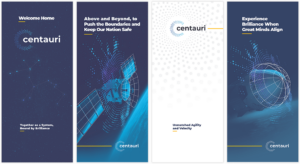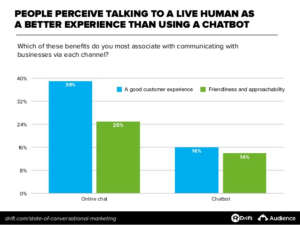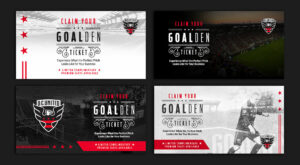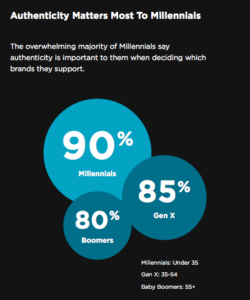The COVID pandemic has put a pause on many personal and business practices, with one stand-out exception. In the midst of COVID, digital transformation hasn’t slowed; instead, it’s actively accelerated as we try to keep up with today’s digital customers. “Digital transformation” has become a powerful buzz-word that has executives signing checks left and right. Many companies are investing heavily in digital, and while these investments continue to grow, the expected results often fail to materialize. But why? Technology and unsuccessful efforts to scale are often the first things we look to blame, but the real issue may be more deeply rooted.
Digital Transformation Requires a Culture Shift
In order to successfully execute a digital transformation, change must be driven from the top down. Beginning with management, the company as a whole must not only understand the goals and reasons for changing, but also the urgency for doing so to successfully prepare for a more digital future.
Companies are getting 50% more business and leads online than ever before, and this number will only continue to grow. To capture this ever-expanding market, it’s important to understand that the tactics and processes that got you to this point need to be an ongoing initiative. Digital transformation is often not one and done, it will not be sustainable without the future introduction of more digital practices.

How Can You Avoid Digital Transformation Failure?
You can start by making sure your team is on the same page regarding what tactics and strategies will make your business successful in the digital age. One method many companies are using to enter the digital space is through digital briefing centers and virtual events. Engaging the entire leadership team as well as your customers in the virtual space is a great way to lead a digital transformation in a world where fewer interactions are in person. Digital briefing centers also have the ability to be available at any time of day, allowing prospects to access your content at their convenience, not yours.
In today’s virtual world, differentiation through digital engagement is critical. Take a look at Bluetext’s work in the Digital Briefing Center space and find out how you can recreate the in-person experience.
Watch Bluetext founder, Jason Siegel, discuss the ways you can avoid digital transformation failure with Travelocity Founder and keynote speaker Terry Jones in this week’s Virtual Marketing Minute.
As of late, communications have been drastically changing, and companies have had to adapt quickly and swiftly to accommodate the current COVID-19 environment. It is a new and unprecedented scenario, forcing flexibility and fast thinking to all aspects of the business. As work-from-home policies and entirely virtual communications surge, recruitment strategies have been greatly impacted. How a company reacts to this digital shift and adapts various business models is crucial to future success following the return to normalcy.
Improving Remote Recruiting & On-Boarding
Learning how to better recruit and virtually onboard, not only during COVID-19 but throughout a company’s entire lifespan, is essential. It demonstrates your company’s ability to stay flexible, proactive, and conform to different comfort levels.

Have a Convincing & Personalized Careers Page
Virtual recruiting isn’t a novel idea. Companies have been trying to actively attract new talent online for years. However, in order to get a great pool of new hires, you need one thing: an outstanding career section on your website. Your career section is the portal for all potential new employees to investigate your company, culture, benefits, growth opportunities, and what you are all about. This is your first impression to prospective employees, who are most likely browsing opportunities at multiple companies! The main mission of a career section is to make the biggest impact in the shortest amount of time. How do you do this? With the proper targeting.
Proper targeting isn’t all about spending large sums of money on paid media. It’s important to utilize your current resources and current employees to create a lasting campaign. Centauri, a technology-driven company providing high-end, creative software and engineering solutions to critical national security missions, came to Bluetext wanting a recruitment-focused campaign. Looking at the diversity in the age, specialty, race, gender and backgrounds of current employees, Bluetext created a range of different personas. Backtracking to Marketing 101, persona creation is a critical step in marketing to the right audience. It’s crucial to know a user’s specific goals, interests, and motivations. For example, a young college graduate student will have different goals versus an experienced middle-aged military veteran. By creating personas, potential employees are able to connect more with someone that closely resembles them. For proper targeting, personalization is key. The career section should play into all personas, create hyper-specific content and show the user relevant jobs pertaining to them. Sound like a lot of legwork? Digital marketing agencies, such as Bluetext, are experienced and proficient in persona creation and targeting strategies.

Leverage Alumni Networks
Another great way to better recruit qualified candidates is to create an Alumni Network. This can take many forms, with the most popular being an informal social media group harnessing Facebook or Linkedin). This creates a space for alumni to connect with others, share thoughts, and best of all, provide valuable leads. Not only are you getting free referral lead generation, you nurture an excellent relationship with the company even after the employee has left. It creates brand ambassadors who are constantly promoting your company in a positive light, possible future business partners, and topnotch re-hires.
Institute a Welcoming Virtual Onboarding Process
While virtual recruiting was surging in popularity even before COVID-19, virtual onboarding is relatively new. Companies like Amazon have already begun to virtually onboard thousands of new hires to keep up with higher demands. The biggest concern for most employers is exactly how to bring a newly-hired employee into the company and properly integrate them.
Onboarding is the first time a new employee gets a true first impression of the company in action. Maybe new hires came into the office to interview, but this is the real introduction to the nit and grit of day to day tasks. The first day typically involves numerous face-to-face meetings and handshakes–both no longer possible amidst the COVID pandemic. When virtually onboarding, It’s important to utilize scheduling software, internal communication platforms, and video conferencing tools in order to keep the initial introductory phase as personal, engaged, and genuine as possible. This is especially important for one-on-one meetings with direct managers.

Being able to leverage current new-hire learning processes virtually is a huge focus as well in the current environment. Do your new hires get a “Welcome Binder?” Replace that with a consolidated folder filled with the online version. Do you typically run through various Powerpoints with your new hires? Think about translating those into short, educational shared videos. Are there various informational sessions for new hires? Leverage video conferencing and screen sharing tools. Translating your in-person process to online can be done by almost anyone. In fact, the more people involved the better! Have multiple employees help create onboarding videos so that new hires get introduced to a wider breadth of the company.
The main goal of your virtual onboarding should be to make the new hire feel comfortable. Make sure to over-communicate and offer assistance as much as needed. Be sure they are understanding expectations laid out and asking questions when they feel confused. Make sure they get proper introductions, are included in virtual activities, and let them truly shine.
Virtual recruiting and onboarding are of utmost importance right now, but companies will benefit by taking advantage of these now and implementing these processes for all future recruiting and onboarding processes and the industry shifts. At Bluetext, there is no limit to the amount of success we can help you achieve. To learn more about our processes and to see our work, check out our case studies.
Ready to partner with Bluetext to achieve your marketing goals? Schedule a call with us today.
“Should we be marketing right now?”
That’s the question a client asked for the first time the day before the COVID-19 pandemic was declared a national emergency by the federal government.
Since then, we’ve gotten the same question in some form by most clients and by every new business engagement at our agency.
In less than a week, we have reimagined a work environment that’s evolved over nearly two centuries, coffee spoon by coffee spoon, cubicle by cubicle, combo meal by combo meal.
Yet while it’s not business as usual, it’s still business and your customers still need your help.
Should we be marketing right now?
The answer is yes, and, if you think not, you may still be thinking about marketing all wrong.
Is Your Approach to Marketing Right?
In some instances, at the core of the question is an assumption that marketing is, by itself, invasive. And sometimes that’s true. Poorly planned buys that target the wrong audience, campaigns that haven’t been well-conceived that add noise to noise, awareness campaigns that do nothing but thump your customer against their forehead.
Remember first and foremost that marketing isn’t really about you. It’s about your customers.
It’s about what you can enable them to do. Your marketing should never be an unwelcome intrusion to talk about your company. It should always focus on customer enablement. If it’s an awareness campaign it should be authentic and meaningful, not merely an expensive version of a pop-up ad.
Of course, we may not recommend launching a new campaign in the teeth of a news cycle dominated by a global crisis. You can check Ad Age’s list of brands’ marketing response to see a few of the major brands who have delayed new campaigns. But even among the largest brands, the trend hasn’t been silence, but adaptation.
Why Continue Marketing?
Your Customers Need your Help. As much as we may like to think the reason to run a business is to create great marketing campaigns with an agency like Bluetext, ultimately businesses exist because you have a service you think can help other companies or individuals. And you’re right. Marketing may interest or make potential customers aware of a product, but the reason they buy isn’t the company, but the solution it offers. While customer needs may have changed, the fact that needs exist hasn’t changed.
It’s Now your Primary Contact Vehicle. Business-to-business and business-to-government sales are a high-touch sales market now in a no-touch world. Your digital marketing is now even important to maintain relationships. Webinars, email campaigns, video, and virtual events are now a critical way to maintain relationships when the days of hosted lunches and in-person meetings are temporarily in the past.
Even consumer brands like restaurants or sports lose their primary touch-point in the in-person experience. But that doesn’t mean they should surrender their place in the consumer’s mind.
Your Brand Journalists Know the Answers. The specialization of products and services has expanded massively at the same time traditional media has declined. Brand journalists have filled the gaps to be experts on their company’s offerings and their industries. Questions about VPN services or season ticket plans aren’t going to be answered by the media. Understanding how you can modify SD-WAN to best handle the surge in traffic for the shift to BOPIS at a retail level and telework on a corporate level won’t have its own segment on CNN. The answers aren’t coming from traditional media gatekeepers. They will come from your marketing teams. Brand journalists can provide expertise about the market.
Because Information Is Always Better Than Silence. Reacting to a story puts a brand in a weaker position than telling its own story and moving the narrative forward. Saying nothing puts a brand in a worse position. Customers and prospects want to see that you have an understanding of the situation and that you’ll be able to continue to provide service. Companies will be able to build goodwill for their brands by instilling confidence in their customers.
What Should You Do Differently?
While you should continue marketing during the COVID-19 crisis, that doesn’t mean you should act as though nothing has changed.
Think about your tone. Realize that no matter how big or small a company may be, they’re all made up of people, people who deal with the same challenges and same stresses the rest of us are dealing with. Kids have to be monitored, communication tasks are more complex than ever (be prepared to hear “I’m sorry, I didn’t realize I was on mute,” between six and six thousand times a day).
Change the way you speak just as you would in real life. Make sure your messaging guides include standards on tone and conversation and aren’t just the partial script of tag lines and message maps. We were already beyond a world of one-way communication in marketing and now it’s even more so.
Be sure your brand is empathetic and helpful above all else.
Rethink Customer Needs and Challenges. Pull your campaign strategy and brand guides off the shelf. Review the customer wants, needs and challenges. How have they changed? How has your ability to deliver them changed? How does it impact your overall approach? The key to great marketing is understanding your capabilities and your customer wants and finding the point of intersection.
Polish Your Digital Presence. Your website, your apps, your social, your display ads. Your digital marketing is now your front door. (Of course, we would argue this was true long ago.)
- Be sure your website is prominently conveying information most useful to your customers in light of the COVID-19 crisis.
- Be sure your website is communicating everything your customer needs to find, interact and communicate with you.
- Spend time thinking about SEO. Examine your meta summaries and the language that appears on results pages. Think about how search behaviors are changing.
- Take a closer look at your social properties. Are they relevant to your customers and employees? As the remote workforce finds new ways to foster two-way conversations, your social sites represent an increasingly important space to communicate internally and externally.
Be Smart About Tactics. If you have the budget to do it, display ads may never be more useful. With the world behind computer screens, there has never been a better chance to reach a larger audience, segmented by any number of demographic factors to reach the people you can help. Even social media sites like Twitter and Facebook, long a small impact for business-to-business at best, are a potential opportunity. In 2019, Pew Research estimates 62% of people got their news from social media. The drive for more news, faster, is likely growing the presence of your customers on those platforms.
If marketing budgets are already a challenge, get creative. Focus on earned media. Spend time working on your SEO. Think about the best ways you can demonstrate a commitment to your current customers in ways that are not just noise, but meaningful to them.
Take a Deep Breath. The situation we find ourselves in likely isn’t going to resolve anytime soon. And as the adage goes, while few people remember if you do it fast, everyone remembers if you do it right. Having the first word is never as important as having the right word.
Keep Connection Going. The COVID-19 crisis will shuffle the deck for businesses. It’s time to rethink customer needs and usage patterns across all industries. It’s time to think about the acceleration of business trends like the remote workforce of curbside pick-up for brick and mortar stores.
But it’s not time to stop helping customers. It’s not time to stop telling your story. It’s not time to stop marketing.
Additional Resources:
- Coronavirus Disease 2019 (COVID-19) | CDC.org
- COVID-19 (Coronavirus) Pandemic | 211.org
- Coronavirus (COVID-19): Small Business Guidance & Loan Resources | SBA.org
- Guidance on Preparing Workplaces for COVID-19 | OSHA.gov
- Government Response to Coronavirus, COVID-19 | usa.gov
- Virus Outbreak: The Latest News | Associated Press
It’s no surprise that video has taken the digital ad space by storm. It’s rare that you scroll your newsfeed or surf the web without being served an ad that is relevant to your specific interests. In 2019, 87% of marketing professionals were leveraging video in their media strategies and more than 80% of video marketers saw a stronger ROI than when they ran static banner ads or paid social image ads.
So, why are video ads so popular? And why should marketers continue to invest in video advertising in 2020?
Expanded Inventory
For starters, video inventory is incredibly robust. You can reach users across a variety of different platforms and sites – from social platforms to Connected TV devices. That’s right, you can now tailor ads to reach users while they’re streaming a show through their smart TVs. Marketers can also place video pre-roll ads across premium website inventory, along with video-specific platforms like YouTube, where ads play before or during video content that a user is viewing.
Video ad inventory has expanded across social platforms in the past few years as well, and the results have been significant. Platforms such as Instagram and Facebook see 49% higher interactions on video ads than with image ads. With such impressive engagement metrics, it makes sense that marketers are investing more of their media dollars into paid social video ads. In fact, paid social video ad spend accounted for 28.7% of all video ad spending in 2019 ($10.35 billion). This number is projected to grow to $12.48 billion in 2020.
Unique Ad Formats
The unique ad formats offered through video is another reason why marketers are investing more of their paid media budget into the medium. Sprout Social reports that marketers are increasing their digital video budget by 25% year-over-year due to the increase of new ad formats. For example, marketers are now leveraging Instagram stories to connect with users for :15 seconds through an immersive experience with a full-screen interactive video. In 2019, one-third of Instagram’s most-viewed stories came from businesses, and 20% of those stories drove users to directly message businesses.
Another evolving ad format that businesses are taking advantage of is YouTube’s 6-second bumper ad. YouTube bumper ads are non-skippable, and while quite short, marketers have been able to successfully story-tell through a sequence of these 6-second ads. Google Ads shares that “many large brands are using bumper ads to drive upper-funnel goals like ad recall and awareness…. [they] are a cost-effective way to reach your target audience, ensure your message is seen and heard, and keep you top of mind.”
As mentioned previously, the ability to target users through Connected TV (CTV) devices is a huge win for marketers. There is a shift happening between traditional TV and CTV; many households are ditching cable subscriptions and switching to subscriptions with streaming services such as Hulu, Amazon Prime and Apple TV to get their news and entertainment. By 2022, it’s projected that 35 million viewers will watch TV exclusively through streaming services. The result? Marketers are investing less in traditional TV commercials, and instead, putting those dollars behind non-skippable :15, :30 and :60 second CTV ads. The best part of CTV advertising is that you actually have access to ad data! With traditional TV, networks will provide projected impressions for running commercials during specific time slots; however, with CTV, you’ll know exactly how many users watched your ad, along with viewability metrics and insights into ad recall.
The Future of Video
While banner and image ads have seemingly run their respective courses, the future of video advertising looks promising. With new formats and campaign functions rolling out across platforms specifically for video, marketers should set aside a healthy media budget for testing new video opportunities in 2020.
One new practice that Google Ads recommends is to make your video and search ads work together. Google Ads states that marketers who run search and video together will experience a 45% higher lift in ad recall, and a 180% higher message retention. One brand, in particular, found that running video alongside paid search led to a 4x increase in branded search, and dropped their CPA by 70%.
Another new trend popping up across paid social is the use of live video. Marketers are investing in live video as a means of building trust and transparency with consumers. We’re used to seeing this trend across Instagram and Facebook Stories, and video-first platforms like Snapchat. However, some businesses are migrating live video to LinkedIn to help tell brand stories and to show followers the real people behind the company name. Live video is helping to break down walls and let users connect with businesses in a personal way.
Other new video opportunities coming our way are: shoppable video ads, augmented reality campaigns, new possibilities on IGTV and Facebook Watch, and so much more.
Bottom line: Invest in video advertising in 2020. You’ll be glad you did. Find out how Bluetext has leveraged video ads in successful go-to-market campaigns.
In a world where we are flooded with advertisements and sponsored content every moment of every day, how can you make your ad stand out from the rest? What is going to make a consumer buy your product vs. your competitor’s product if they have the same features and are selling for the same price? Sure, vibrant colors, strong call-to-actions and unique imagery can help, but in order to get the right users to engage with your content and actually convert, you have to go a step – or a few steps – further. The key to marketing success in 2020 is personalization.
In many ways, marketers already know the benefits of personalized ads. For example, we know that digital retargeting ads drive more conversions and have a stronger conversion rate than prospecting ads, merely because retargeting ads are tailored to reach users who have already visited your site. Retargeting ads are more personalized than prospecting ads in nature – we know someone visited the site and expressed interest but didn’t convert, so we use that information to create a new ad with different messaging and a stronger CTA to entice that user to convert. That’s personalized marketing, in its simplest form.
In 2020, personalization is not only growing, but if you don’t take advantage of personalized marketing, your digital ad campaign might fail. Studies show that people are 80 percent more likely to buy something when a brand makes the experience personal. With access to sophisticated technologies such as AI machine learning at our fingertips, marketers are equipped with the tools necessary to tailor ads to personal attributes and behaviors, at scale.
As Martech Advisor states, “AI personalization refers to the categorization of different customer data sets and extracting valuable insights from them. These insights are fed into an automation engine that can take action without human intervention.” In other words, AI machine learning scans a user’s online behavior to understand what type of messaging would resonate best with that end-user. Have you ever visited your Amazon Prime home page to discover several new products that Amazon is recommending for you, that you’ve never seen before? This is AI-based personalization. Amazon’s AI scanned your past user and purchase behavior and introduced you to new products, customizing your home page to match your personal attributes. You’ve likely experienced something similar on music streaming apps – Spotify recommends a playlist for you based on the songs you’re listening to at that point in time.
So – how can you take advantage of personalized marketing? Here are 3 ways you can start to leverage consumer data to customize (& personalize!) your advertising:
- Dynamic Ads – Perhaps the most daunting reason why marketers don’t take advantage of personalized advertising is the assumption that ad creative and targeting processes are manual; however, AI has completely changed the game. Through AI, digital ads can now be dynamically created based on user behavior. We touched on retargeting earlier, but with AI learnings, retargeting efforts have become far more sophisticated. If a user visits a specific white paper or product on your site but does not download or buy, AI can generate an ad for that specific white paper or product and place it in front of that user with tailored messaging. Best of all? This entire process is automated. Gone are the days where your creative team is buried in producing 50 ads in 7 different ad sizes.
- Invest in AI tools for your website – Tools such as AI-powered chatbots or AI engines can shed light on how you can personalize ad campaigns. Chatbots allow users to share data that might not be readily available through other form submissions on the site. The information users provide in a chat is then scanned through AI, producing key insights for marketers to use when forming ad campaigns. For example, if the same pain points or topics continue to surface through chatbots, you might have an idea for your next personalized go-to-market campaign.
- Tailor your campaigns based on audience segments – This sounds simple enough, but more times than not, marketers target all audiences segments under one campaign, rather than breaking up campaigns based on audience segments. For example, you want to target users who play basketball, soccer, football and tennis. You place all of these audience segments under one campaign and serve the same ad and ad copy to each user. Sure, these are similar audience segments in that they are all sports-related; however, a user who plays basketball will likely ‘look’ different than a user who plays tennis. Instead of serving the same ad and ad copy to all users, why not tailor your messaging to each specific audience segment? The more personalized you can get the ad and ad copy level, the more likely your ad will resonate with the end-user and lead to a conversion. Of course, a campaign structure like this that used to be manual has become nearly automated through DSPs and Paid Social platforms that provide ways to streamline this process, freeing up your time and eliminating human error.
In 2020, we challenge marketers to take a step back from the generic go-to-market campaigns and to get personal! How will you use AI-based personalization and machine learning to enhance your digital ad campaigns? Learn how Bluetext has used personalized marketing for our clients’ campaigns, effectively reaching the right audience with tailored, custom creative, via our website.
When it comes to building or remodeling your company’s website, partnering with a top website design firm is essential. By hiring a leading website design firm, you get to work directly with experts, maximize the utility of your team’s resources, get access to the latest technology, and so much more. Having a professional, user-friendly website can make all the difference when it comes to acquiring new clients and retaining old ones. Prospective customers will appreciate an enhanced user experience and will be reassured by the legitimacy of your company. Read Bluetext’s top 4 reasons to work with an expert website design firm.
1. Make a Lasting First Impression
At Bluetext, each website we build or remodel goes through a strict quality assurance process to ensure every page functions properly and looks perfect. Our team of coders, developers, and designers evaluate both the UI and UX of the site, validate all links and forms within the site, and ensure that each page follows brand guidelines – but that’s just to name a few of the steps in our process.
When it comes to your website, we know that first impressions are incredibly important. In fact, it only takes users 50 milliseconds to form an opinion on your website and decide if they will stay or leave. Not to mention, over 35% of users will leave a website if they find it unattractive. With a leading web agency, you can rest assured that your website will not only look good but is also easy to use.

2. Optimize Your Website’s Loading Speed
One of the most essential ways to make a positive first impression on users is by having a website that loads quickly. As a website design firm, our team of web analysts will assist with file compression and code optimization, enhance time to first byte, evaluate HTTP requests, and everything else in between, ensuring that your site loads as fast as possible.
About half of web users expect websites to load in less than two seconds and will leave if a website takes any longer than three. If your website drives $100,000 in revenue per day, increasing your loading speed by one second could help increase your daily revenue by 7%. A leading web agency will ensure that no potential customers are lost due to site speed.
3. Ensure Your Site’s Accessibility
At Bluetext, all engagements go through our team of accessibility experts to ensure you are publishing in compliance with the newest WCAG AAA standards. With well over half of the world on the internet, it’s vital to ensure that there are no barriers to access your website for individuals with any disability.
4. Create a Successful Campaign
Through different channels such as social media, mobile applications, search engines, and display networks, businesses can get their names in front of countless users. Meeting the ever-changing requirements of those channels, however, has become increasingly difficult. Not to mention, most every country has different advertising requirements, adding another layer of complication for those interested in advertising outside of the United States.
A website design firm, like Bluetext, can not only help you run global ad campaigns but can help you build the perfect landing page for users to see when they click on your ads.

If you’re looking to hire a leading web agency, see what Bluetext can do for you.
Content marketing is a consistently invaluable tool to increase conversions by educating your leads and customers. As we welcome a new year as well as a new decade, it’s important to understand the emerging content marketing trends that will dominate 2020. How should you change your digital content marketing strategy to keep pace with the ever-evolving nature of content marketing?
In this blog post, we take a look at 5 content marketing trends that will keep you ahead of the curve in 2020 and beyond.
Data-Driven Content
How are you, as a brand, determining what content is useful and relevant for your audience? That’s where data comes in. By harnessing the lessons of previously successful content marketing initiatives, companies are able to reverse engineer the data and identify KPIs that preceded the success. Once those KPI’s have been established, it is easier to create content in that same strain and capitalize on the proven success. A DC-based digital branding agency like Bluetext can assist you in determining successful KPI’s and creating the rich content your audience wants to read.
Smart Device-Centric Content
Although smart devices have been a key consideration in B2C content marketing for quite some time, this year, more focus will be placed on specific functions of smart devices such as voice search. Voice search is becoming such an integral mobile tool, 48% of consumers are using voice for “general web searches.” Companies looking to stay ahead of the curve should look to optimize their content specifically for voice search purposes. Understanding how users search via their voice will help you tailor your existing content for voice-SEO and create more effective headlines for future content initiatives. A DC digital web design agency like Bluetext can help by conducting an analysis of your audience’s voice searches and recommend changes to your existing content and future content to maximize the return on your investment.
Conversational Marketing is King
In the digital era which champions online shopping, consumers are looking to establish trust and connection through more personalized, authentic shopping experiences. Conversational marketing can aid your company in engaging with your audience in a more genuine way. By engaging in a conversation, your company gains access to more personalized data about your consumers such as their specific needs and future goals. Investing in tools such as chatbots or real human-to-human experiences can make all the difference in your competitive industry. As we progress through 2020, chatbots and other AI tools will continue to improve and positively impact lead generation.

2020: The Year of the Snippet
As we know, Google dominates the search engine market share worldwide, with a resounding 92.71% of the market. When considering a user’s search intent, Google will display what they call a “snippet” at the top of the page, which provides consumers with key points within a piece of content, allowing them to receive the information they’re looking for faster. As such, it’s becoming more commonplace for consumers to enter a longtail keyword into Google, knowing that they will receive the information they’re looking for via a snippet, without clicking any page links whatsoever.
In order to win that highly coveted snippet spot, companies should look to hire an interactive web agency such as Bluetext. Bluetext’s SEO analysts can conduct an audit of your current content and pinpoint exactly where changes need to be made in order to signify to Google crawlers that your content is important. Optimizing your content for snippets will greatly enhance user experience, as users will be able to find the information they are searching for concisely and quickly. Not only will an interactive web agency audit and enhance current site content, but they will also create a content strategy and editorial calendar so your brand can continually publish content your users are searching for.
The Popularity of Podcasts
According to a recent study, 51% of the entire US population has listened to a podcast in 2019. That figure is up by 7% from the previous year. As we look ahead to 2020, podcasts will continue to dominate, as that number is expected to keep rising. Although it may seem like everyone has a podcast these days, there are still opportunities for brands to get ahead of the curve and start their own podcasts.
That being said, if you see a clear demand for audio content within your market, ensure that you create a podcast the right way. Podcasts should have clearly defined KPI’s, a regular posting schedule, and content your audience will actually care to listen to. A Virginia internet & inbound marketing agency like Bluetext can partner with your company to assess the need for a podcast in your industry and among your competitors, help you create valuable content and even develop a paid advertisement plan to spread awareness via other podcasts your audience is listening to.
2020 is already well underway and in order to achieve success, companies need to get ahead of this year’s trends with a thorough and achievable marketing strategy and plan of action. A DC digital branding agency such as Bluetext can audit your current digital content marketing strategy and suggest recommendations to help improve your current trajectory. To learn more about Bluetext and how we can help you, check out our work here.
You say you want a revolution, but do you really?
Branding is an integral part of any company’s identity. Not only does branding make a memorable impression on your consumers, but it sets the tone for what new and existing consumers can expect from you. Smart branding also offers a valuable opportunity to differentiate yourself from your competitors.
For companies who may get the sense, both internally and externally, that their brand is outdated, it could make sense to rebrand. Rebranding your entire company might seem like an intimidating proposition, however, rebranding doesn’t have to mean a major overhaul. Something as simple as updating your brand’s color palette or your content’s tone of voice can have a huge impact on how the brand is perceived, breathing new life into the already-established company identity.
That’s where Bluetext comes in. A full-service D.C. based marketing agency, Bluetext has refreshed the brands of some of the most premier companies in the country, balancing brand history with brand vision.
Bluetext suggests these five tips when considering your next brand refresh:
Determine Your ‘Why’
For many companies, it can be easy to express interest in a rebrand. However, a company must first realize why they want to rebrand. This ‘why’ will dictate the entire process and ensure the goals of the project are being realized. For example, your ‘why’ might be:
- Our messaging is confusing for consumers and isn’t aligned with how sales go to market.
- We need to differentiate ourselves and stand out from our competitors in the market.
- We’re going after a new audience and need a brand that speaks to that market.
- Our company has expanded and we need a brand that is modern, flexible, and future-proof.
- Our brand and accompanying brand story is outdated and no longer reflects the company’s values.
- We recently went through a merger or acquisition and we need to hone in under one cohesive brand identity.
- Our brand doesn’t create a memorable impression on our target audience.
Invest in High-Quality Content and Visuals
It may seem simple, but investing in high-quality content portrays a degree of professionalism to your clients. Stock imagery might be tempting, but the personality of high-quality content and visuals will help you stand out in the market, increasing your relatability with your clients. See how Invictus reaped the rewards of investing in high-quality content.
Invictus Brand Manifesto from Bluetext on Vimeo.
Change Your Brand Colors
Depending on the size of your company and the amount of signage and collateral you own, changing your brand colors can be either a minor task or a large undertaking. Business psychology reminds us that colors have different effects on different consumers. Red, for example, can elicit feelings of warmth, excitement, and intensity. Green, on the other hand, can elicit feelings of tranquility, health, and harmony.
Deciding what emotional experience you want your customers to associate with your brand can send a very clear and competitive message to the market. For example, McDonald’s conducted a brand overhaul in 2009 across Europe, trading out their signature red logo, for more of an earthy-green look. This tactic was implemented to promote a more eco-friendly image, alongside other earth-friendly transitions such as environmentally friendly refrigeration and converting used oil into biodiesel fuel. The idea caught on so well, McDonald’s has gradually updated its restaurants nationwide with the refreshed color palette.

Focus on a New Facet of Your Story
If you have a sound brand offering in the market, you may just need to find a new story to tell. Keeping your messaging fresh and personal can excite your consumers, attract potential leads, and elevate your reputation in a busy industry. See how Bluetext partnered with D.C. United to create a multi-touch, multi-channel campaign to deliver messaging across multiple digital channels, social media, email, and microsites.

Act More Human
Authenticity is everything in marketing, there’s no question about it. In a recent survey by Stackla, 86% of consumers say authenticity is important when deciding which brands to like and support, with the most emphasis placed on authenticity by Millenials. Consumers want to connect with the companies they interact with. Promotional sales messaging can come off as disingenuous and pushy. Putting in the effort to bring an authentic and unified brand, campaign, or product message to market will make a bigger impact and ROI every time. Whether its social, blogs, email blasts, premium content, or even in-person communications, an authentic narrative will establish an authentic connection between your consumers and their advocacy for your company.

There are a plethora of ways to tweak your brand and excite your market potential. A top branding agency will tell you how a little can go a long way. Focusing on some low-hanging fruit can delay a full-scale revolution and save you time and money.
For more information for a refreshing brand opportunity with Bluetext, explore our case studies, work, and processes at www.bluetext.com/branding
What exactly is digital branding, how is it different from digital marketing, and why does it matter? These are common questions that top digital branding agencies hear from clients. Digital branding is an umbrella phrase that describes a variety of ways that companies and organizations can capture their customers’ attention online. In the digital age, having a presence and personality online is often just as business success as personal relationships.
The difference between digital marketing and branding is significant
Don’t let the similar use of digital in these terms confuse you – digital branding companies often use both terms in discussing their work, but the processes are different. Digital marketing activities are those which promote products or services based on their value proposition in an online setting. In comparison, digital branding is more nuanced. The best branding agencies promote their customers’ businesses by highlighting specific underlying characteristics and values that make their company unique. Top branding agencies take this a step further by advocating for a digital-first approach.
Take your brand online with refreshing campaigns
You can think of your company’s brand as it’s ‘personality’ and the different aspects of its personality are it’s brand assets. These brand assets typically include:
- Company Name
- Logo
- Color Schemes
- Messaging
- Slogans
- Fonts
- Advertising Methods
In an era where consumers turn to the internet for answers, positioning your company to stand out online is essential.
A company’s brand colors, fonts, logo design, and application should all be carefully curated to fit a specific personality.
The brand interactions of the previous era of marketing were one-directional: a customer might see your advertisement but wouldn’t be able to engage directly with your company through that channel. With the internet, an eye-catching digital marketing campaign can lead to conversions and a strong user engagement with memorable branding.
Digital branding by the digits
If you still aren’t sure what digital branding can do for your business, consider some key figures that illustrate the value of digital branding.
Recent studies have shown that purposeful branding significantly increases revenue. Modern consumers expect companies to have an online presence, and nearly 30% prefer to communicate with brands via digital avenues.
Because almost 50% of web searches are made from smartphones and mobile devices, companies have had to change the way they design their online presence. Top digital design and top branding agencies can transform dull contact pages stylized like Internet 1.0 websites of the 2000s into responsive and exciting digital destinations. See how Bluetext transformed Clarabridge’s digital presence with a branded video embedded into their website.
Leverage your brand awareness through ads
In 2018, more than 2.3 billion “bad ads” were taken down by Google — investing in your company’s digital marketing and branding with a top branding agency ensures your ads won’t get lost.
Branding is also becoming the go-to approach for advertising across digital platforms: A 2019 report showed that the most-used campaign type among all Facebook campaigns is Brand Awareness—55% of advertisers leverage Brand Awareness campaigns to drive impressions at a widespread and cost-efficient clip.
According to experts in the field, consistent branding across all channels increases revenue by 23%, and 89% of marketers say that building off that consistency and achieving brand awareness is their top goal.
Despite the emphasis consumers have placed on seeking out authentic brand interactions, only 60% of marketers think their brand is aligned with their long term goals. Bringing in support from a top branding agency is a surefire way to bridge this gap and polish your companies digital brand experience.
Digital branding means a versatile and flexible approach to engaging customers
Modern consumers spend their days on a variety of different media outlets and through multiple channels, which is a substantial shift in how people consumed information a decade ago. Companies need to respond by following their consumers to these new platforms to maintain visibility and relevance. As interactions increasingly move online, brands must adopt a digital-first approach.
October 26, 1994 is a day that will be forgotten by few…it was the first day a banner ad (or any ad for that matter) was posted on the internet. AT&T paid $30,000 for the appearance of the first banner ad. While we have seen an explosion in the variety of ad types on the internet since then, banner ads still remain among the most popular. Banner ads are rectangular displays that appear on web pages but can vary in appearance, theme, and content. Even though banner ads may seem like a rudimentary advertising technique, they are still an incredibly useful tactic used by brands across the world. Here are four reasons why Bluetext believes banner ads are still an asset to any company.
-
Banner Ads Can Have Different Presentation Elements
Nowadays, banner ads are just downright pretty. Thanks to the evolution of graphic design, banner ads can include elements such as graphics, video, audio, and everything in between. As the world of paid media continues to grow, banner ads have evolved alongside. In recent years, it has become evident that animated banner ads are far more effective – and engaging – than static ads. In fact, animated banner ads can help increase conversion by up to 73%. The catch, however, is that animated banner ads are not easy to produce without a team of animators, especially with normal file sizing in mind. Luckily, a branding agency such as Bluetext has an experienced creative team, which proved helpful when the Graduate Management Admission Council (GMAC) needed help with a brand redesign. Part of this redesign included a new media campaign that presented personalized content through captivating visuals, engaging messaging, and efficient audience septation; in short, it helped ensure that the right message was going to the right person at the right time. As a result, GMAC saw a 153% increase in website content clicks and 400,000 more microsite visitors.

-
Banner Ads Increase Awareness of Your Brand and Products
While banner ads may be helpful in driving immediate sales, they also play a larger role in building brand recognition, which is vital when internet users don’t immediately click on an ad. Studies have shown that banner ads are a great way to keep your brand top-of-mind when it comes time for a customer to buy your product, which is helpful considering 73% of internet users in the United States over the age of 14 buy products online. Additionally, even though web users may not be directly looking or focusing on your ads, they will be subconsciously exposed to your brand and products through banner ads. While the ultimate goal is to drive sales, banner ads are a fantastic way to keep your company, your brand, and your products on the minds of consumers.

-
Banner Ads are Easily Measurable
One of the most beneficial aspects of modern-day advertising is our ability to measure the successes of the campaigns a company like Bluetext can help you run. Thanks to programs such as Google Ads and Google Analytics, we can measure data points that tell us how many people saw your ad, how many people clicked on your ad, how many people made a purchase after viewing your ad, and so much more. With help from these tools, we know the average click-through-rate for a banner ad is 0.07%. While this number may seem low, it is necessary to recognize that it has a higher action rate than billboard (.03%) and television (.05%) ads.

-
Banner Ads Support Retargeting
Have you ever put an item in your shopping cart and let it sit, only to see ads for that same product pop up all over your web pages? This tactic is referred to as ‘retargeting,’ which helps drive users to complete their orders (or other low-funnel action). Studies have shown that users who are exposed to retargeting banner ads are 70% more likely to complete the desired action. If that isn’t convincing enough, remember how we said the average click-through-rate for a banner ad is 0.07%? Well, the average click-through-rate for a retargeting banner ad is 0.7%, 10 times the amount!
Clearly, banner ads, especially animated ads, have their pros. With some of those pros in mind, it is vital to remember a few key tips when running a banner ad campaign. First, update your ads! Click-through-rate decreases by nearly 50% after running the same group of ads for five months. Secondly, as only 8% of customers return to their cart to finish a transaction without retargeting, it is vital to allocate some of your advertising budget to retargeting campaigns. Lastly, don’t get discouraged if your banner ads have a low click-through-rate. Other metrics, such as impressions, can show us how many people have seen the ad, even if they haven’t clicked on it. In short, banner ads are a key advertising method to drive sales and boost brand awareness. While banner ads are great alone, they are most effective when paired with other types of advertising techniques, such as paid search.

